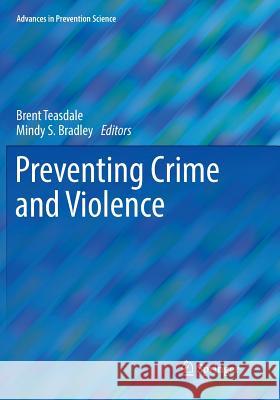Preventing Crime and Violence » książka
topmenu
Preventing Crime and Violence
ISBN-13: 9783319829890 / Angielski / Miękka / 2018 / 388 str.
Kategorie:
Kategorie BISAC:
Wydawca:
Springer
Seria wydawnicza:
Język:
Angielski
ISBN-13:
9783319829890
Rok wydania:
2018
Wydanie:
Softcover Repri
Ilość stron:
388
Waga:
0.68 kg
Wymiary:
25.4 x 17.78 x 2.08
Oprawa:
Miękka
Wolumenów:
01
Dodatkowe informacje:
Wydanie ilustrowane











